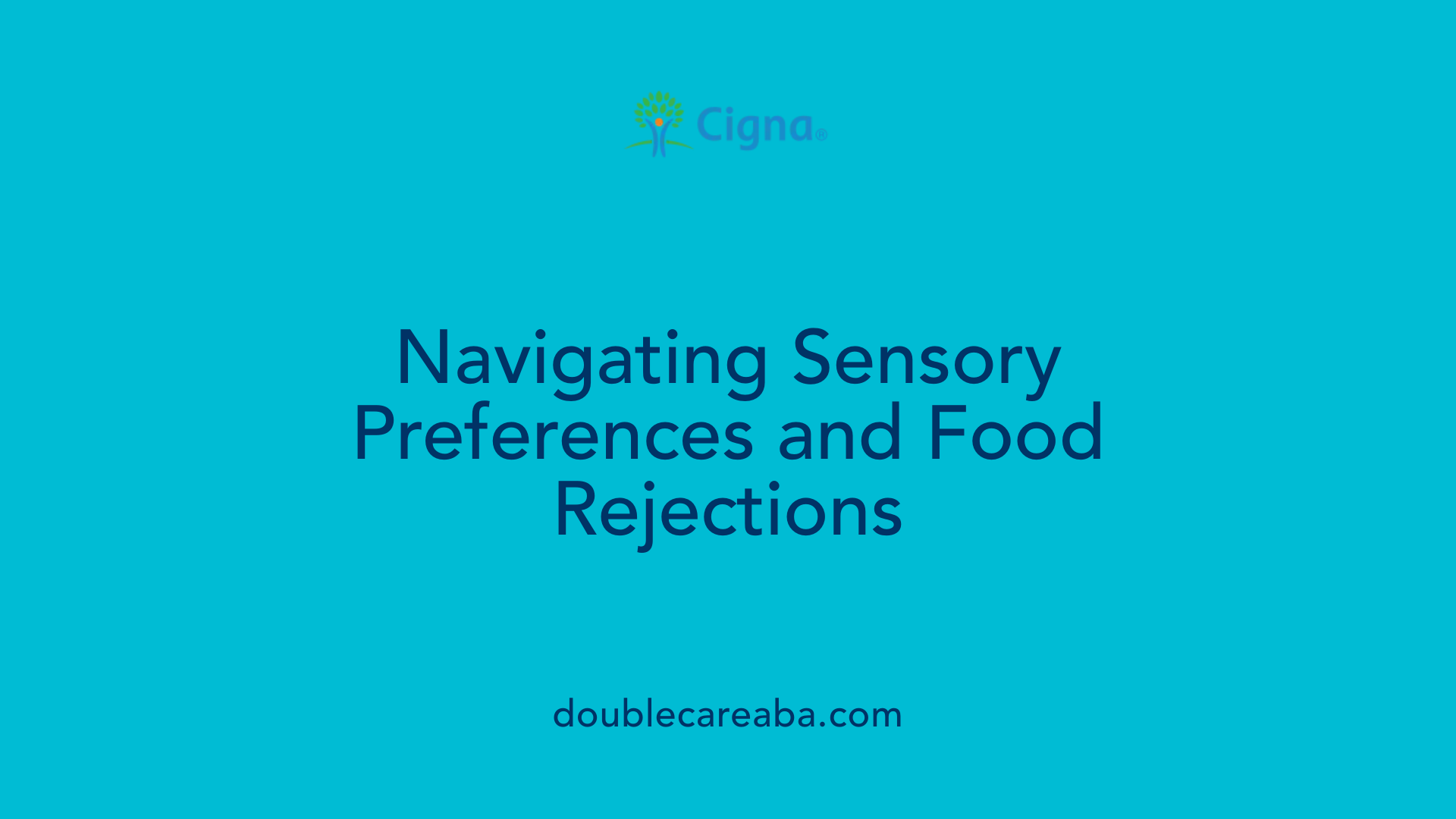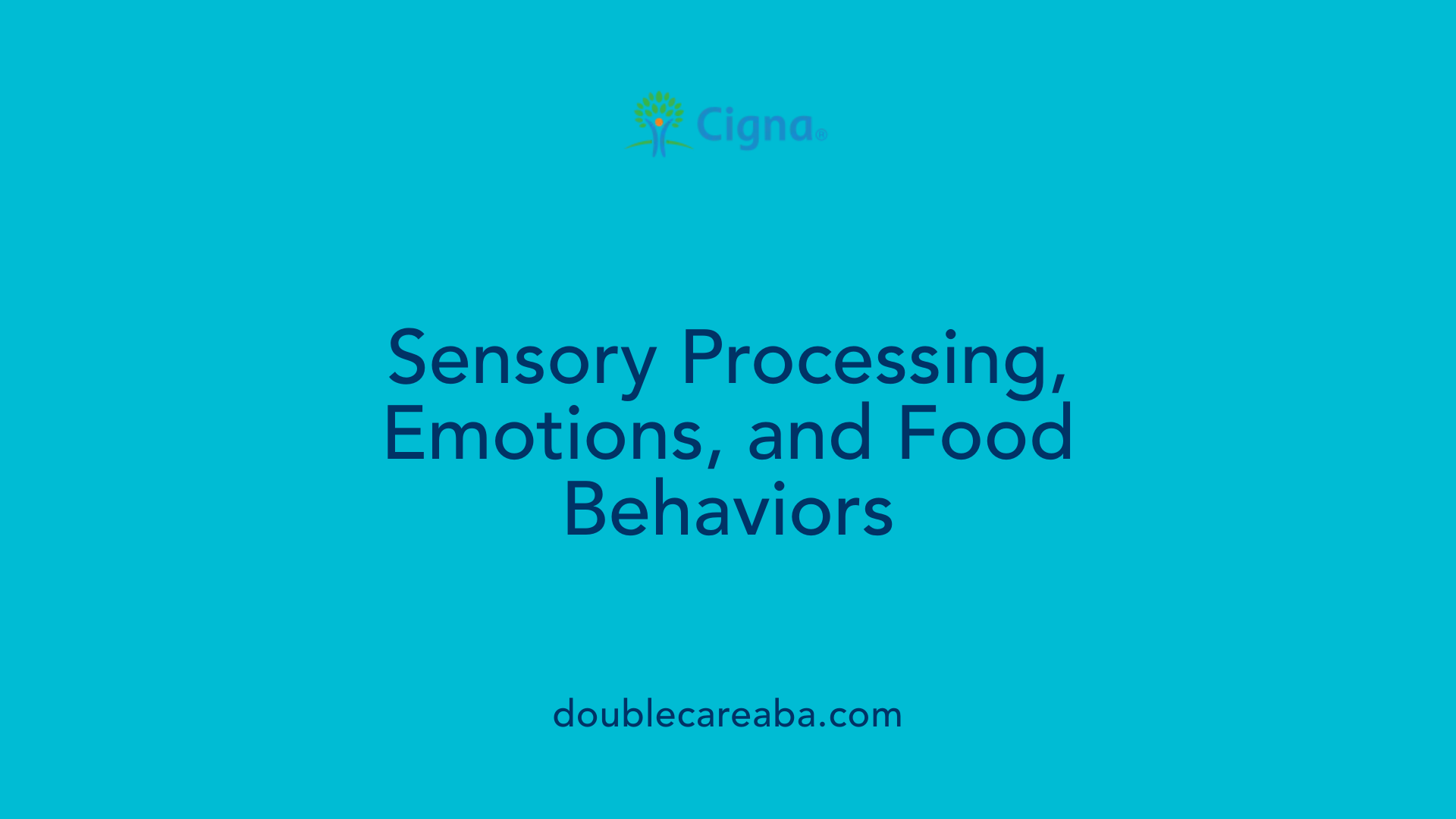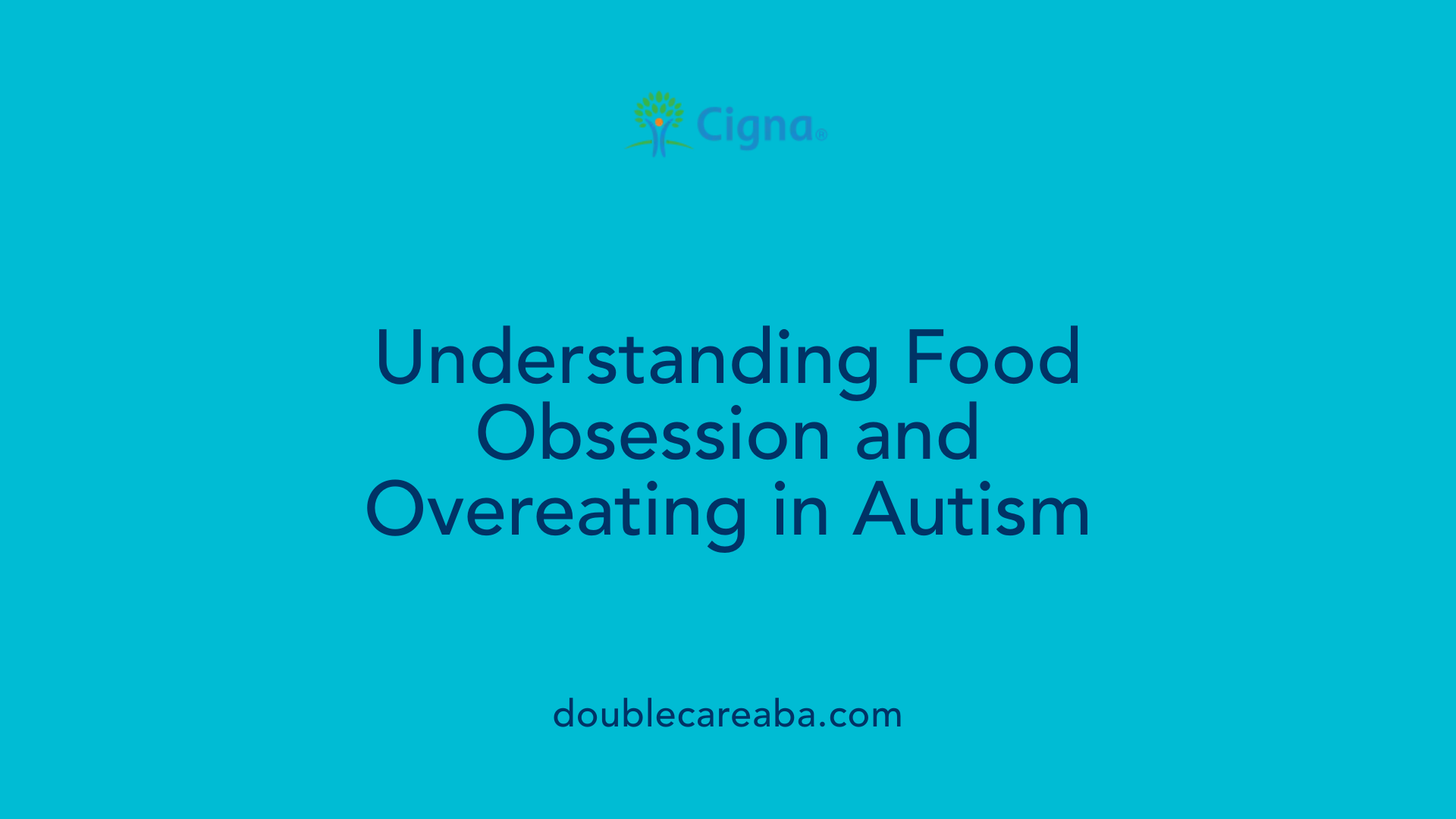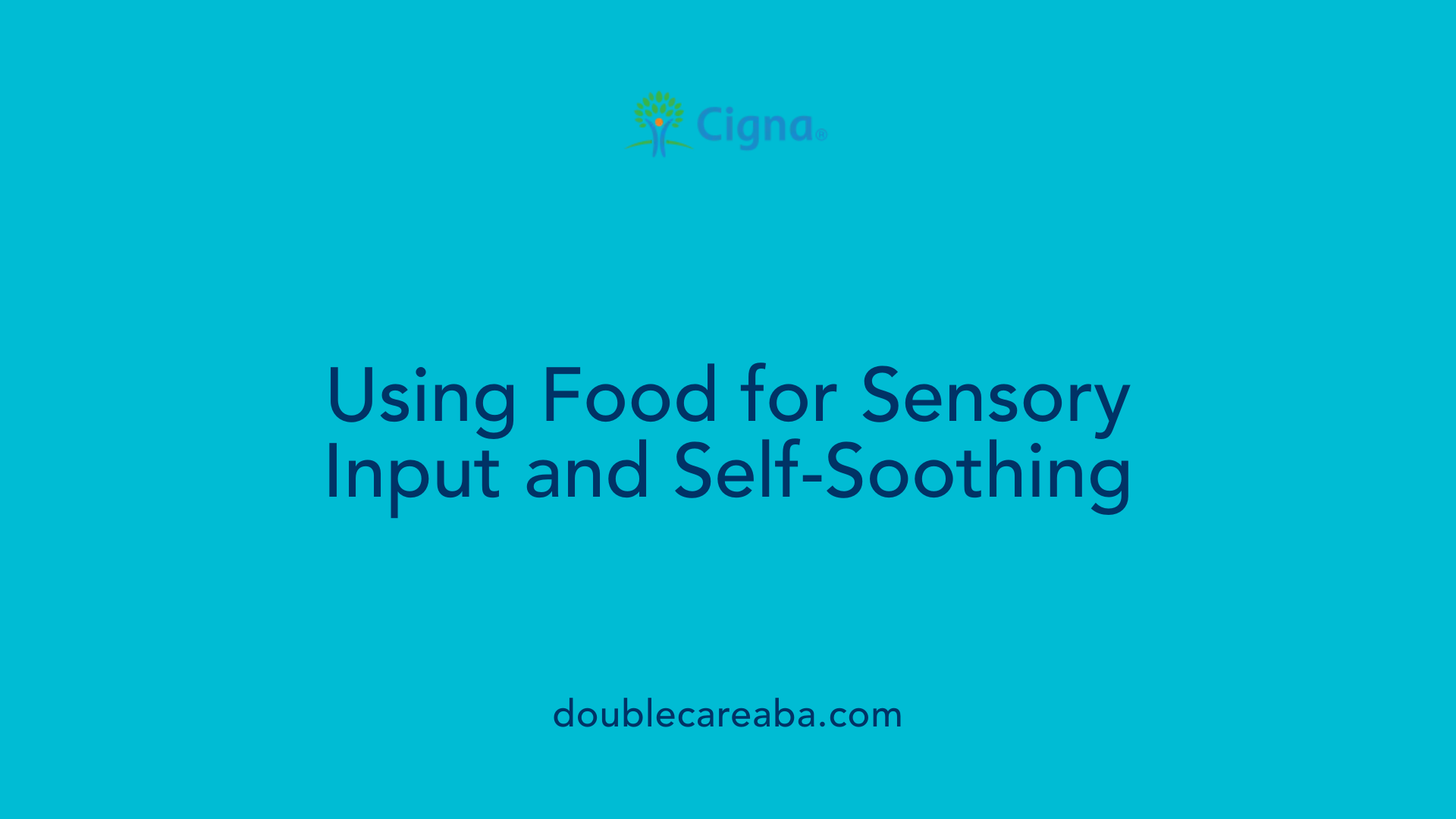Exploring Food Habits in Autism Spectrum Disorder
Autism spectrum disorder (ASD) often involves unique eating behaviors that can range from intense food obsessions to dangerous eating disorders. Understanding these behaviors is essential for caregivers, educators, and health professionals to provide effective support tailored to individual needs.
Manifestations of Food Obsession and Hyperfixation in Autism
How does hyperfixation or obsession with food manifest in autistic individuals?
Food obsession and hyperfixation are common behaviors among autistic individuals. Many tend to develop intense and prolonged preoccupations with specific foods, often referred to as 'safe foods.' This preoccupation can lead to highly restrictive eating patterns, where the individual prefers the same foods repeatedly over long periods. Research indicates that up to 70% of children with autism display some form of food obsession or restrictive eating behavior.
This hyperfixation often centers around particular textures, flavors, or temperatures, providing a comforting sensory experience. For some, it involves a focus on highly flavorful or textured foods, while for others, it may be about the routine of eating the same meal daily. Such behaviors can serve as a source of sensory input or emotional regulation, making it difficult for the individual to diversify their diet.
Is overeating or hyperphagia a common symptom of autism?
Contrary to restrictive eating patterns, many autistic individuals also experience hyperphagia, characterized by an uncontrollable desire to eat beyond genuine hunger cues. This can result in constant or excessive eating, which may lead to health concerns if not properly managed.
Hyperphagia might be linked to sensory needs, emotional regulation, or attempts to self-soothe. It is often observed in conjunction with stress, anxiety, or sensory processing difficulties associated with autism. Managing hyperphagia typically requires a comprehensive approach involving behavioral strategies and, sometimes, professional guidance.
How these behaviors impact daily life
Food-related hyperfixation and hyperphagia can significantly affect daily routines and health. Restrictive diets can limit nutritional intake and interfere with social activities involving food, like meals with family or peers.
On the other hand, excessive eating may lead to weight gain, gastrointestinal issues, or other health problems. The persistent preoccupation with specific foods or routines can also cause stress and anxiety, especially when food availability or circumstances change.
To address these challenges, tailored strategies such as gradual food diversification, sensory integration techniques, and emotional support are essential. Professional help from dietitians, psychologists, and occupational therapists often plays a vital role in managing these behaviors effectively.
| Behavior Type | Common Manifestations | Impact on Life |
|---|---|---|
| Food obsession/hyperfixation | Preference for specific textures, flavors, or routines | Restricts diet, affects social eating |
| Hyperphagia | Excessive or uncontrollable eating | Health risks like obesity, GI issues |
Understanding these behaviors as part of autism can facilitate better support systems, helping individuals develop healthier eating habits while respecting their sensory and emotional needs.
Sensory Preferences and Food Rejections in Autism

What are common food-related behaviors and sensory preferences observed in autistic individuals?
Autistic children and teenagers often display unique food-related behaviors driven by sensory sensitivities. Many experience food obsession or hyperfixation, meaning they develop an intense and prolonged preoccupation with specific foods. These individuals might have strong preferences for certain textures, colors, smells, or temperatures, which significantly influence their eating choices.
Additionally, they may reject foods that do not meet their sensory preferences, leading to food aversion and restrictive eating patterns. Often, autistic individuals stick to a limited range of foods or brands, finding comfort in familiarity. This behavior can be part of routines that help manage sensory overload or reduce anxiety related to eating.
Some also use food to self-soothe or seek sensory input, such as tasting different textures or experiencing temperature variations. This sensory-driven approach to eating highlights the importance of understanding individual preferences and sensitivities in supporting healthier eating habits.
What are signs and symptoms of food obsession or related eating behaviors in autistic individuals?
Signs of food obsession include a marked preference for specific textures, colors, smells, flavors, or temperatures. For example, an autistic child might insist on only crunchy foods or only eating foods of a certain hue. These preferences often come with strict routines around mealtime, such as only eating at particular times or in specific environments.
Restrictive eating is common, with some children refusing to try new foods or rejecting entire food groups. Hyperfixation on food can manifest as repeatedly discussing a favorite snack or engaging in rituals related to eating.
Many autistic people use food or eating habits as a way to manage anxiety or self-regulate sensory input. They may exhibit behaviors like food refusal, food stacking, or exaggerated focus on particular foods, which help them feel more in control.
Understanding these behaviors is crucial for caregivers and professionals to develop supportive strategies that respect sensory preferences while encouraging balanced nutrition.
The Role of Sensory Processing and Emotional Regulation

How do sensory sensitivities influence eating in autistic individuals?
Many autistic children and teenagers experience sensory processing differences that significantly impact their eating habits. These sensory sensitivities can cause them to develop cravings for specific textures, flavors, or temperatures, or to avoid particular foods altogether. For example, some may prefer crunchy, smooth, or mildly flavored foods and reject those with strong smells, certain textures, or spicy tastes. This preference can lead to repetitive eating patterns or restricted diets, which are often driven by the need for sensory comfort.
Sensory cravings or aversions can also lead to over-focusing on certain foods, sometimes resulting in food hyperfixation. Such habits may cause individuals to repeatedly eat the same “safe” foods or textures that provide predictable sensory input. These behaviors are often rooted in a desire for sensory regulation and can sometimes be mistaken for eating disorders, but they are typically part of broader sensory processing differences common in autism.
How does emotional regulation relate to food-related behaviors in autism?
Autistic individuals frequently experience heightened levels of stress or anxiety, which can influence their eating behaviors. Food often becomes a tool for emotional self-regulation, helping them manage difficult feelings or sensory overload.
When distressed or overwhelmed, some may turn to food for comfort, leading to overeating or fixation on particular foods. This emotional eating can serve as a calming mechanism, providing sensory satisfaction and a temporary escape from stress. It’s important to recognize that such behaviors are often a coping strategy rather than a sign of disordered eating.
Support strategies might include helping children recognize their feelings, teaching them alternative calming techniques, and establishing routines to provide predictability. Professionals such as psychologists and dietitians can offer tailored interventions that address both emotional and sensory needs.
Additional support approaches
- Regular mealtimes and consistent routines to reduce unpredictability.
- Substituting non-food sensory objects with other sensory stimuli.
- Teaching emotional awareness and regulation techniques.
- Engaging children in activities to distract from emotional triggers.
Understanding the interplay of sensory processing and emotional regulation is vital in managing eating behaviors among autistic children and teenagers, ensuring they receive appropriate support to develop healthy eating habits and emotional resilience.
Managing Food Obsession and Overeating in Autism

What management strategies are effective for food obsession or hyperfixation?
Autistic children and teenagers often develop intense interests or preoccupations with certain foods, known as food hyperfixation. To manage this behavior, caregivers can implement practical strategies such as limiting the amount of food visible in the child's environment and controlling portion sizes to reduce obsessive intake.
Restricting access to specific snack foods can also help prevent impulsive overeating. Engaging children in alternative activities, like arts, sports, or puzzles, redirects their focus away from food and supports emotional regulation.
Establishing regular mealtimes and ensuring children stay well-hydrated can create a predictable routine that minimizes impulsive eating. These routines help reduce anxiety around mealtime and make eating behavior more manageable.
How can sensory sensitivities and emotional triggers be addressed to manage overeating?
Many autistic individuals use food as a way to self-soothe or satisfy sensory needs. Addressing sensory sensitivities involves substituting non-food sensory objects, such as textured fabrics, stress balls, or aromatherapy, to fulfill sensory stimulation without reliance on food.
Emotional factors also play a significant role in overeating. Supporting autistic children involves teaching them to identify and understand their emotions, which can help reduce the tendency to eat for comfort. Techniques like mindfulness and emotion regulation strategies can be beneficial.
In some cases, therapy with psychologists or behavioral specialists provides tools to cope with emotional challenges, reducing the dependence on food as a calming mechanism.
Managing food obsession and overeating involves a combination of environmental adjustments and behavioral support. Implementing structured routines, controlling sensory input, and helping individuals develop emotional awareness are critical components.
Below is a summary table outlining strategies for managing these behaviors:
| Strategy | Description | Purpose |
|---|---|---|
| Limit food in sight | Keep snack foods out of easy view | Reduce impulsive eating |
| Control portion sizes | Serve smaller amounts at mealtimes | Prevent overeating |
| Restrict snack access | Limit or schedule snack times | Manage hyperfixation |
| Provide alternative activities | Engage with arts, sports, or sensory objects | Distract from food obsession |
| Regular mealtimes and hydration | Establish consistent meal routines and water intake | Reduce unpredictability and impulsivity |
| Substitute sensory stimuli | Use textured objects or aromatherapy | Address sensory needs |
| Support emotional awareness | Teach recognition and management of emotions | Reduce eating for emotional comfort |
Being aware of these strategies can help caregivers support autistic children and teenagers in managing their food behaviors effectively, ensuring healthier habits and emotional well-being.
Addressing Pica and Dangerous Eating Habits

What is Pica and how is it managed in autistic individuals?
Pica is a condition where individuals eat non-food items, which can pose serious health risks such as choking, poisoning, or intestinal blockages. It is relatively common among autistic children and teenagers, often linked to sensory needs or emotional regulation challenges.
Managing Pica involves carefully replacing non-food objects with safe and appropriate snacks to satisfy sensory or oral fixation needs. Reinforcing proper eating habits and ensuring the child understands what is safe to eat are important steps. Consistent routines and supervision are crucial to prevent ingestion of harmful items.
What are some safety measures and interventions for dangerous eating behaviors?
When dangerous eating behaviors such as Pica or other harmful habits are observed, seeking professional help becomes vital. Healthcare professionals including GPs, paediatricians, dietitians, and psychologists can assess the behavior, identify underlying causes, and develop tailored intervention plans.
Therapeutic strategies may involve behavioral therapies that focus on modifying harmful behaviors and teaching coping skills. Environmental modifications, such as restricting access to hazardous non-food items and creating a structured daily routine, can also reduce risks.
In more severe cases, multidisciplinary approaches are recommended. Regular monitoring and ongoing support help ensure that behaviors are managed effectively, safeguarding the child's health.
Replacing non-food items with safe snacks
A common approach to managing Pica is to substitute unsafe non-food objects with appropriate, safe snacks. This not only minimizes health risks but also addresses sensory-seeking behaviors.
This strategy includes:
- Providing sensory-friendly foods that satisfy oral fixation.
- Reinforcing positive eating habits through consistent routines.
- Using visual aids and social stories to teach acceptable behaviors.
- Offering alternative sensory stimulations, such as textured toys or chewable items designed for sensory needs.
By combining these interventions with professional guidance, caregivers can help children develop healthier habits and reduce dangerous behaviors.
Autism and Eating Disorders: Risks and Support Strategies
Is overeating or disordered eating a concern in autism?
Research indicates that individuals with autism spectrum disorder (ASD) are more vulnerable to developing eating disorders compared to neurotypical populations. Studies show that between 4% and 23% of people with an eating disorder also have autism, highlighting a significant overlap.
Overeating, in particular, can be linked to various autism-related traits and behaviors. For some, overeating may serve as a means of self-soothing or gaining sensory input, especially during stressful or overwhelming situations.
What are common eating disorders in autistic individuals, and what causes them?
Among the different types of eating disorders, anorexia nervosa appears to be the most common in autistic individuals. This may be driven by a need for control, rigid routines, or sensory sensitivities related to food textures, smells, or tastes.
Other behaviors include food hyperfixation—an intense, prolonged preoccupation with a specific 'safe' food—and restricted diets, which are not always classified as disordered unless they significantly impair health or daily functioning.
The causes of these disorders are multifaceted. Sensory processing differences can make certain textures or flavors intolerable, while obsession with routines and control may promote restrictive eating. Additionally, food management can be used to reduce anxiety or cope with emotional difficulties. Stress, anxiety, and sensory sensitivities all play a role.
Support and treatment adaptations
Effective support for eating disorders in autistic individuals requires tailored approaches. Psychological therapies should be adapted to address sensory sensitivities and specific routines associated with autism.
A multidisciplinary team involving GPs, pediatricians, dietitians, and psychologists can provide comprehensive care. Approaches include:
- Psychotherapy designed to understand sensory experiences
- Behavior management strategies
- Nutritional counseling adapted for sensory preferences
- Emotional regulation techniques
Support strategies also involve managing behaviors like overeating by restricting access to snack foods, keeping children occupied, and encouraging physical activity. When sensory sensitivities influence eating, substituting sensory stimuli with non-food objects or activities can be beneficial.
For those with emotional regulation challenges, teaching children to identify and manage their emotions helps reduce reliance on food for comfort. If overeating persists or leads to health issues, professional intervention is crucial.
Additional considerations
It is also important to recognize that some behaviors, like food hyperfixation, are not necessarily disordered unless they cause health problems. These behaviors can be managed by engaging individuals in diverse sensory and dietary activities.
Occupation with specific foods or textures can sometimes involve hyperfocus, a trait seen in autism and ADHD, which may not always indicate pathology.
In summary, understanding the unique ways autism influences eating behaviors allows for more effective support and treatment. Combining behavioral strategies, sensory integration, and emotional support can significantly improve eating habits and overall well-being in autistic individuals.
Food as Sensory Input and Self-Soothing Tool

Why do some autistic individuals eat for sensory stimulation?
Many autistic people seek sensory input through food because it provides a variety of textures, flavors, and temperatures that can be soothing or stimulating. Eating different types of foods allows them to satisfy sensory processing differences and find comfort in familiar, predictable sensory experiences. This behavior can be especially prominent when they experience sensory overload or seek sensory regulation.
Some individuals may have intense focus on particular foods, known as food hyperfixation, where they repeatedly eat the same item or type of food. This is often linked to the desire for sensory consistency and the calming effect it provides.
How is food used as a self-soothing mechanism?
For many autistic children and teenagers, food becomes a way to self-soothe during stressful situations. Eating provides a predictable, controllable activity that can help manage feelings of anxiety or overload.
Food can serve as a source of comfort, helping regulate emotions and reduce feelings of distress. Tasting flavors, experiencing textures, and the warmth or coldness of foods can all provide sensory input that calm the mind and body.
In some cases, eating acts as a distraction from emotional difficulties or sensory frustrations, creating a feeling of safety and familiarity. Because this behavior is often linked to feelings of stress or anxiety, it can sometimes lead to overeating or hyperfixation on specific foods.
Additional insights
Strategies to support autistic individuals include offering varied sensory experiences through non-food items, creating predictable mealtimes, and encouraging alternative calming techniques like movement or relaxation exercises. Recognizing eating as a need for sensory input rather than solely a nutritional act helps tailor support and interventions.
Understanding the role of food in sensory regulation and emotional management is crucial for caregivers and healthcare professionals to develop effective, autism-sensitive approaches to eating behaviors.
Conclusion: Supporting Autistic Individuals with Food Behaviors
This section summarizes important aspects of managing eating behaviors in autistic children and teenagers. Overeating can stem from habits, sensory sensitivities, emotional regulation issues, and other factors. Medications that increase appetite should be discussed with healthcare professionals.\n\nTo address habits, strategies include limiting access to snacks, engaging children in activities, and promoting physical activity. When overeating is driven by obsessions, small portions and reducing food visibility are effective. Regular mealtimes and hydration help manage unpredictability.\n\nSensory sensitivities can be eased by substituting non-food sensory objects and providing sensory-friendly foods. Emotional triggers can be managed through emotional awareness and regulation techniques. For pica — the eating of non-food items — replacing these with appropriate snacks and reinforcing proper eating habits is recommended.\n\nRecognizing the increased risk of eating disorders, especially anorexia nervosa, among autistic people is crucial. Factors like routines, sensory issues, and emotional management contribute to these conditions. Treatments should follow general guidelines but be adapted for autism, emphasizing psychological therapies and individualized support.\n\nAutistic individuals often use food for comfort or sensory input — tasting textures, flavors, and temperatures. Stress and anxiety may also lead to overeating as a self-soothing method. Effective strategies include eating slowly, choosing flavorful foods, and engaging in relaxation.\n\nFood hyperfixation, an intense preoccupation with specific foods, is common in autism and ADHD. It often serves as a comfort or predictable routine but does not necessarily indicate disorder unless it impacts health. Recognizing the traits of hyperfixation and hyperfocus helps in understanding these behaviors.\n\nSupporting autistic individuals involves understanding the origins of their eating behaviors and implementing tailored interventions. Promoting balanced and healthy eating habits, respecting sensory needs, and providing emotional support can foster better relationship with food and improve overall well-being.
Supporting autistic individuals with food-related behaviors
Understanding the link between autism and food obsession is vital for providing appropriate support. Recognizing behaviors like hyperfixation, sensory preferences, and emotional regulation needs allows caregivers and professionals to implement tailored interventions that promote healthier relationships with food and reduce risks associated with disordered eating.














